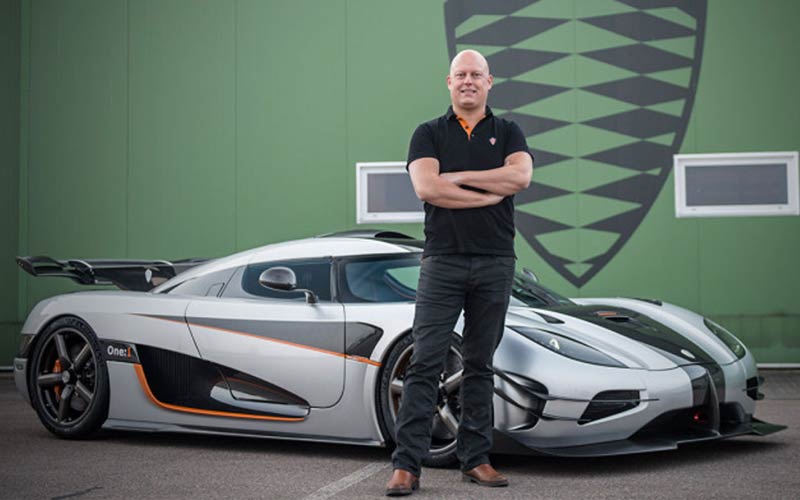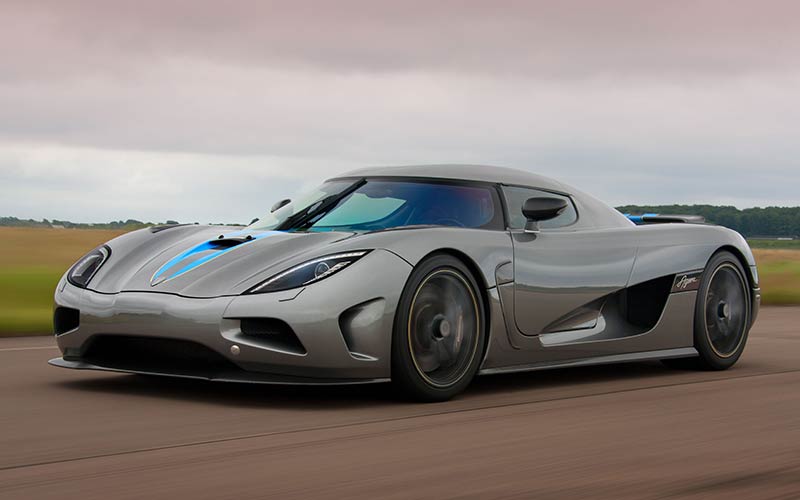What Is Koenigsegg?
The Swedish supercar maker you’ve never heard of has been quietly at work making some of the most spectacular automobiles in the world. What is Koenigsegg?
From Supercars to Hypercars
The realm of supercars is one of superlatives. Most advanced. Most expensive. The rarest. The fastest. This is the world of Christian von Koenigsegg, founder of the Swedish supercar maker that bears his name. Though that company is a relative newcomer to high-end performance cars, they have quickly built a reputation for producing jaw-droppingly beautiful, benchmark-setting cars.

Von Koenigsegg made good on his childhood dream of owning his own car company in 1994, following a successful stint in the export business. It would be an eight-year process for the company to develop and release its first road car, the CC8S. At the time of its debut in 2002, the Koenigsegg CC8S boasted 665 horsepower, then a record amount of power for a production car.

Since that time, Koenigsegg has grown into a major player in the supercar space, producing record-setting models and developing some of today’s most cutting-edge automotive technologies. Unlike many other players in the supercar space, Koenigsegg designs, engineers, and builds nearly all their components themselves, from the carbon fiber monocoque chassis and bodies, to their advanced aero bits, to their next-level powertrains. Koenigsegg is a boutique car company making some of the most astounding supercars in the world. Below is a look their cars past, present, and future.
Ascension of Koenigsegg

Following on the heels of the CC8S, Koenigsegg released a succession of ever more impressive cars starting with the CCR. It’s twin-supercharged V8 boasted 806 horsepower and set a record in 2005 as the world’s fastest production car with a run of 241 mph. A year later came the CCX, the first Koenigsegg to be sold in the US.

Next came the CCXR in 2007. It would be just the first of Koenigsegg’s cars designed to be able to run on bio/flex fuels as well as standard petrol. Rather than sacrificing power, such fuels added to the car’s output which maxed out at a thundering 1,004 horsepower. Next came the Trevita special edition and its diamond-coated carbon fiber construction. The Agera, arriving in 2010, took Koenigsegg’s formidable engine tech a step further with a new twin-turbo 5.0L V8 and considerable updates to the company’s design language. In 2014, Koenigsegg released the very limited edition One:1, which, as the name suggests, has a power to weight ratio of one to one. Once again, the company laid claim to the fastest production car with the Agera RS achieving a top speed of 277.8 mph in 2017.
Koenigsegg’s Current Cars
Koenigsegg Regera

First released in 2015, the Koenigsegg Regera, like all of the company’s cars, has a limited production run. In the case the of the Regera, just 80 cars are to be produced. The Regera features a plug-in hybrid set up combining a twin-turbo V8 along with three electric motors to produce a truly dizzying 1,500 horsepower and 1,475 lb.-ft. of torque. The Regera doesn’t have a traditional transmission but instead features a Koenigsegg engineered “direct-drive system” which uses a hydraulic coupling and mounts one of the electric motors on the crankshaft. The result is as close to instant torque as you’ll find in any non-BEV (battery electric vehicle).
Koenigsegg Jesko

Named after Christian von Koenigsegg’s father, the Jesko is another crazy supercar with some novel transmission technology. The Jesko is powered by the same 5.0L twin-turbo V8 as the Agera, now tuned to produce 1,280 horsepower on 95 octane and just over 1,600 horsepower on E85. The Jesko’s gearbox is perhaps its most interesting bit of engineering. The nine-speed automatic has not one or two, but seven clutches. The effect, as describe by von Koenigsegg, is that of a bicycle’s dual gear sets, effectively simulating a multitude of gearing ratios. Shifting by computer, the Jesko’s transmission can shift gears at between 20 to 30 milliseconds. Hence its title, the Light Speed Transmission.
Koenigsegg Gemera

Koenigsegg’s most compelling car is also its newest. Due out in 2022 with a price tag around the 2 million dollar range, the Gemera will be the world’s first four seat supercar. But that’s not what makes this car so special. Instead, that credit goes to its powertrain and specifically the technology involved in coaxing some 700 horsepower out of a tiny twin-turbocharged 2.0L 3-cylinder engine.

The engine, dubbed the Tiny Friendly Giant, lacks a traditional cam shaft to regulate valve lift. Instead, the engine features a uniquely patented system of solenoids that adjusts valve timing on the fly via computer. The result is increased power and increased fuel efficiency and therefore lower emissions. The TFG engine works in conjunction with three electric motors to produce yet more crazy numbers: 1,700 combined horsepower and 2,581 lb.-ft. of torque. Koenigsegg estimates the Gemera will be able to achieve a top speed of 249 mph and a 0-60 run of 1.9 seconds.
Complex as it is, Koenigsegg’s new valve system is perhaps one of the final major innovations for the combustion engine. That is until their next supercar.









